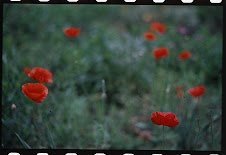Pictures; the technology to take them and the ends they themselves serve are many. From family snaps to high art to top secret intelligence the photograph is more than just a social record. It is a cultural commodity, an art form, an extension of language, an interactive tool, a source of power and therefore has an active and important role in the discourse of the new media. As I said in my earlier posts the camera is an agent of virtuality. The author Susan Sontag said that it made 'everyone a tourist in other peoples reality and eventually in one's own.' This is true when one considers how common picture taking has become. We are surrounded by framed representations of our own and others' experiences. It helps construct our lives' story; support its ideology and we enjoy it. We pay money for it. We spend time consuming it. It has become a techno-imperialist blanket that society uses continually to cover time and space. An objective representation of humanity. It is good for the virtual collective as it allows communication that transcends linguistic limitations; through pictures it provides patches for the quilt. However, this lasts only as long as one remains tucked up under it in bed with the scientific method looking up at the mirror on the ceiling saying how much they enjoy not having to go outdoors. Outside the narcissistic box many people still live without the use of the quilt as a myriad patchwork of constructed symbolic interface. It maintains virtual communication. Nor the mirror, a metaphor for the screening/ lensing process that is much like a portal between the real and the represented worlds. They speak with their mouths, face to face. Though they may understand images subconsciously they do not rely on them for agency in a cultural consensus nor do they possess the means to utilize them. But nowadays such people are either labelled traditionalist freaks, savages or tramps. Once again we are faced with division; two modes of existence/ activity. The virtual agent suffers a loss of core experience as they engage with the new media. Then there is the human being, who doesn't get to experience the joys of split realities and virtual interface because of limited access. Developments in the traditional machinery however, through digitalisation, micro-circuitry and super plastics are succeeding in closing this gap. One only has to look at photography embedded in cellphone usage as a phenomenon that is fast expanding virtual practice thus connecting everyone with a phone to the digital image world. In some places cellphone ownership exceeds 100 percent making it very hard to escape the social and technological-cultural transformations heralded by such signs. We are all in a sense doomed to activate this process just by looking at a billboard. Virtuality relies on the image and in the new media visuality is at a premium. So what? So read my next post to find out.
Friday, May 9, 2008
means & market
Subscribe to:
Post Comments (Atom)
.jpg)







No comments:
Post a Comment